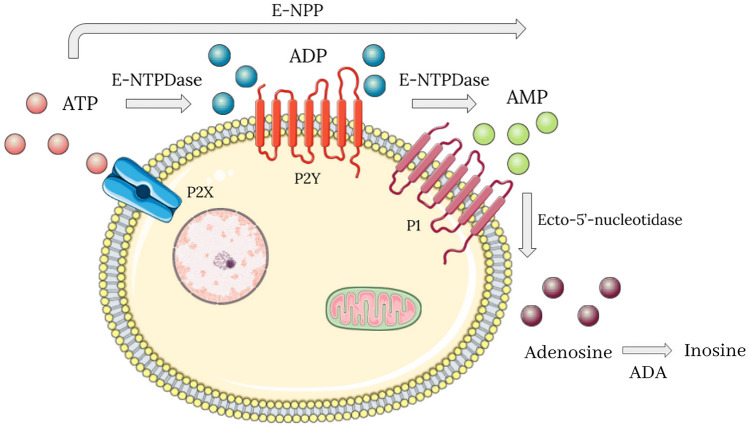Fig. 1.
The purinergic signaling is composed of adenine nucleotides (ATP, ADP, AMP, and adenosine), purinergic receptors, and ectonucleotidases, which are a group of enzymes that dephosphorylate ATP. The purinergic receptors are divided into four G protein-coupled adenosine receptors, designated P1 purinergic receptors, and eighteen P2 purinergic receptors, which mostly have an affinity for ATP. The P2 still are subdivided into four P2X (ionotropic) and eight P2Y (G protein-coupled). About the ectonucleotidases, the E-NTPDase acts on dephosphorylation of ATP in ADP, and of ADP in AMP. The E-NPP converts ATP into AMP directly. Finally, the ecto-5´-nucleotidase turns AMP into adenosine, which is degraded by ADA in inosine. ATP adenosine triphosphate, ADP adenosine diphosphate, AMP adenosine monophosphate, E-NTPDase ecto-nucleoside triphosphate diphosphohydrolase, E-NPP ecto-nucleotide pyrophosphatase/phosphodiesterase, ADA adenosine deaminase

